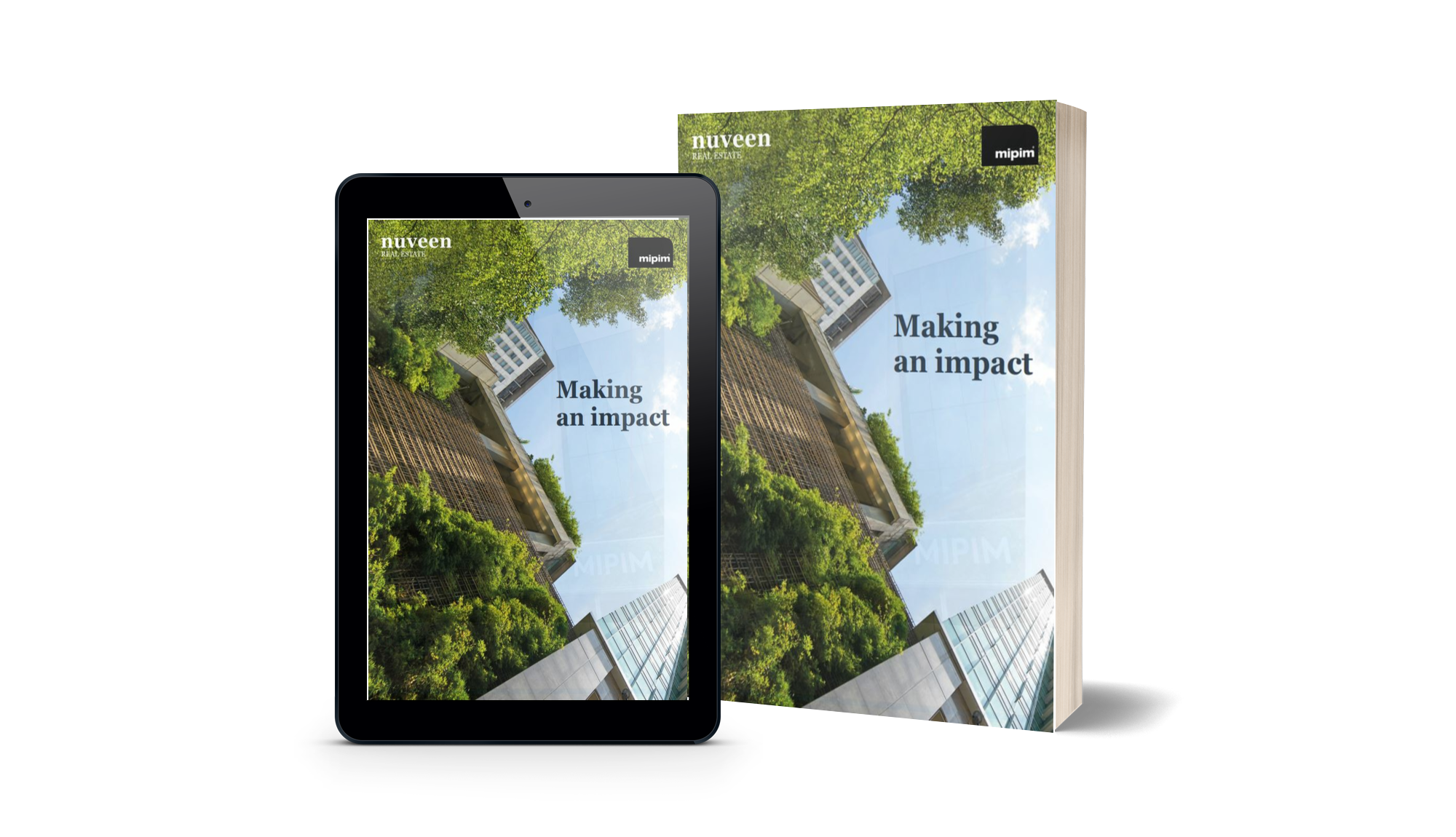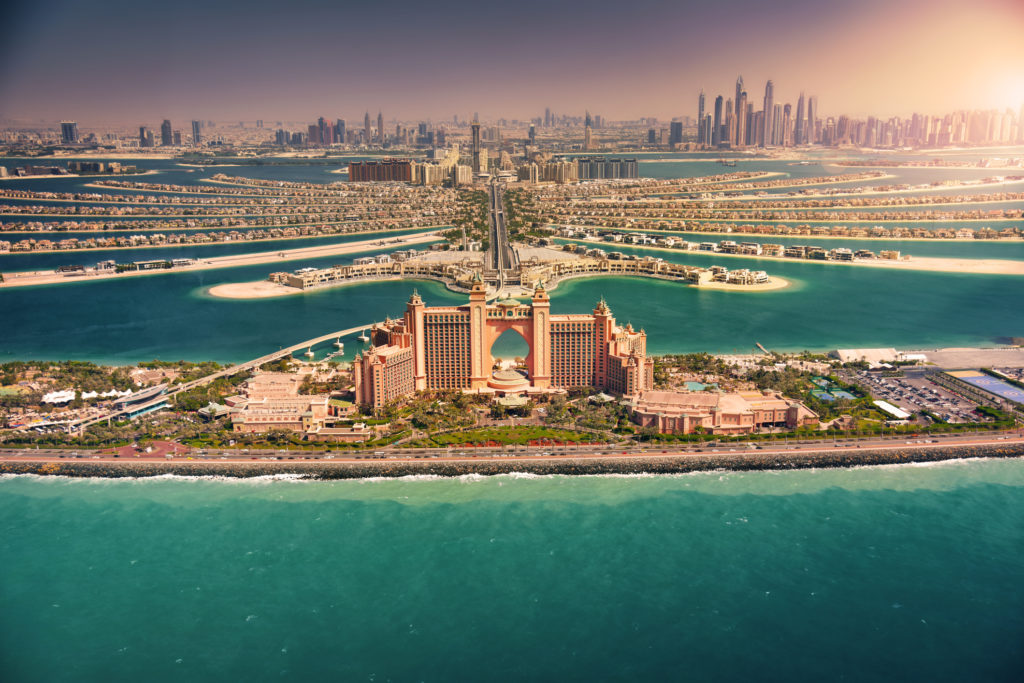Dubai is a city of modern wonders, but it only recently shot into the spotlight. Known for its man-made island resorts, and gorgeous but fuel guzzling sports cars, the city is often a place where money is no object. However, in 2006 the World Wildlife Fund declared the UAE the country with the largest ecological footprint per capita, largely because of its carbon emissions.[1] Since then, this country has turned their investment in cutting edge advancement toward building a more sustainable city for the future.

"Making an impact"- White paper
Successful impact investing in real estate
In the 1950’s, Dubai was not much but a small fishing village. It was only back in 1969 that Dubai received electricity and paved roads, and it wasn’t until the 1970’s that the city had running water. Since then, Dubai’s trajectory to modernization has been steep and rapid. UAE’s Vice President, Prime Minister and Ruler of the Emirate of Dubai, Sheikh Mohammed, has announced that Dubai’s newest goal is to achieve 75% of its energy from clean energy sources by 2050.[2]
Because of its proximity within a constantly sun drenched desert, the city of Dubai has put major investments into solar energy. While their future solar expansions will get them closer to their goals of clean energy, the city is tackling this issue from all angles. Many of the sustainability strategies the city will implement can be seen in their latest real estate projects. The largest is The Sustainable City Dubai, being developed by Diamond Developers. Many of the energy savings are not viewed as expensive improvements, but rather simple updates to building architecture, along with the utilization of innovative products.

"Making an impact"- White paper
Successful impact investing in real estate
Green Technology in Fixtures and Construction
In addition to their efforts in solar energy and water filtration, Dubai is also collaborating with manufacturers to release energy efficiency products for the Dubai market. There are four main areas that Dubai is targeting for energy conservation. These are discussed below:
- Cooling Modifications: Cooling in the heat of the desert is always an energy demanding task, however, there are several modifications that decrease the energy usage in air conditioning significantly. Several landmark buildings in Dubai feature exteriors entirely made of glass, like Burj Al Arab. Low-emissivity (low-e) coatings control heat transfer through windows with insulated glazing. A low-e coating is a microscopically thin, virtually invisible, metal or metallic oxide layer deposited directly on the surface of the panes of glass. Windows manufactured with low-e coatings typically reduce energy loss by as much as 30% to 50%. Additionally, some commercial buildings in the downtown area are using shared cooling systems that divert airflow to several different buildings simultaneously, based on occupancy.
- Lighting Modifications: Phillips is making a one-watt LED bulb that will soon be in buildings across the city. Another way to cut down energy consumption is to use task-oriented lighting. High tech Building Management Systems can also improve efficiency by utilizing occupancy sensors to turn on lights in specific areas of use and to control timers. A Building Management System can also control fans, HVAC, and hot water heater functions.
- Water Fixtures: Dubai has a specific need to reduce water flow. The city has invested heavily in desalination plants, but water in a desert is always a pricey commodity. A new Scandinavian low-flow faucet will be installed in all the local mosques this year, where washing stations tend to be used frequently.
- Building Envelope and Placement: Passive design strategies such as orientation, density, and form will provide the most savings in energy and cost much less. For example, The Sustainable City Dubai currently consists of 500 villas on a compact 114-acre site. The L-shaped houses stand close together on narrow, green streets, facing north, such that they shade each other. The sun falls onto the facades only in the early morning and late afternoon. This simple design choice allows the air-conditioning units to be 40 percent smaller. Passive solar roofing assists in keeping the home’s roof from absorbing heat while producing additional energy. Advanced concrete mixes, extra insulation, and reflective paint further cut energy consumption to around half what would be expected for a 3,000 to 4,000 square foot villa in Dubai.
Dubai is a city known for its wealth, where often money is no object. Now the city has focused its luxurious tendencies toward building a sustainable city for the future. What better place to implement new technology and build sustainable neighborhoods than the city where new technology means status and the government is a friend of development. The supportive political structure means building permits can be awarded in a matter of days. Dubai is well on its way to meeting its energy goals in 2050, and perhaps the rest of the world will follow it into the future of sustainable building.
References:
https://www.baharash.com/architecture-design/dubai-sustainable-city/
http://taqati.ae/wp-content/uploads/2017/12/20171105-DIS-Panel-revf.pdf
[1] WWF Living Planet Report 2006
[2] Dubai Clean Energy Strategy, https://government.ae/en/about-the-uae/strategies-initiatives-and-awards/local-governments-strategies-and-plans/dubai-clean-energy-strategy




